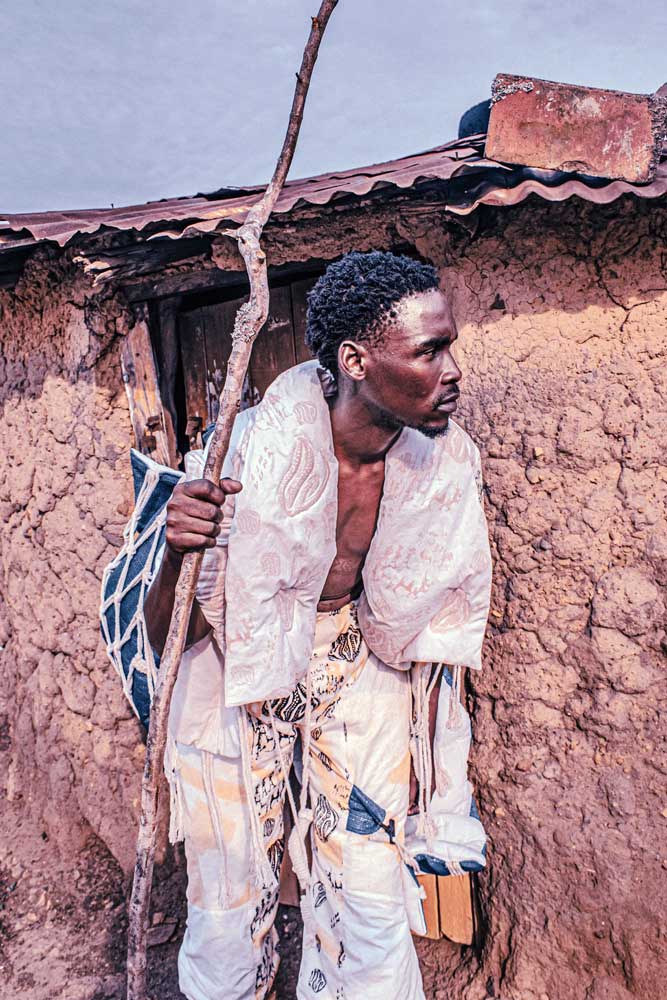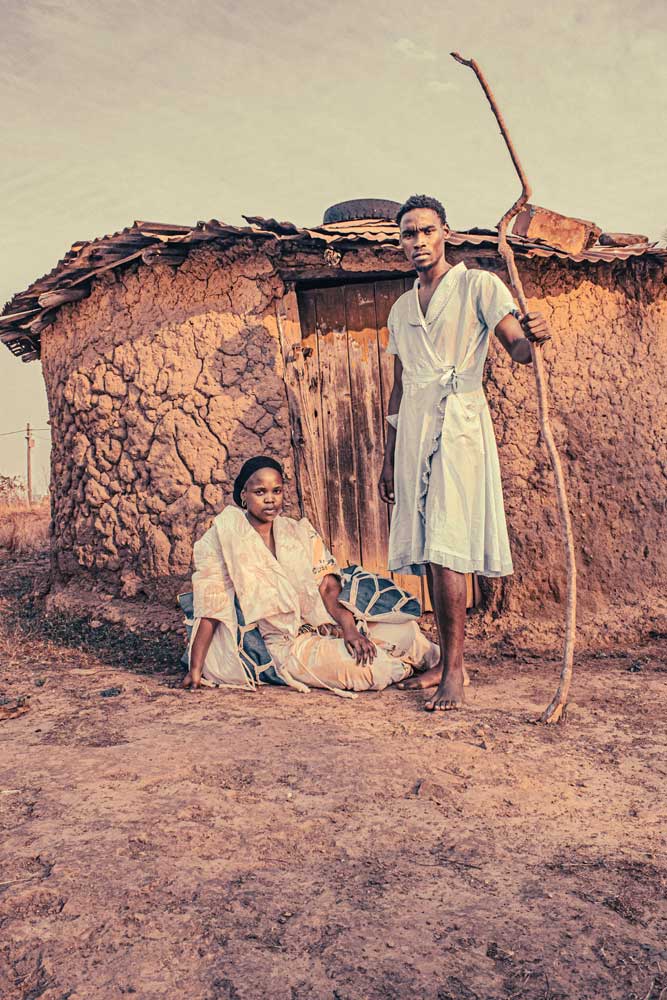
Thabiso Ncanana, Cultivating Cohesion: Challenging Perceptions of Gender in African Culture
In the midst of a rapidly changing world, where cultures and identities are continually shaped by outside influences, my artistic project for the Exploring Visual Cultures exhibition, titled "Cultivating Cohesion: Challenging Perceptions of Gender in African Culture," delves into the essence of African heritage and its profound connection to sustainable practices. Drawing inspiration from my childhood experiences in rural areas and seeking to communicate the profound sense of community that unites us as Africans, I present a visual narrative that challenges the prevailing perceptions of gender in our culture.
Throughout my work, I reference African culture as a reservoir of wisdom and authenticity, emphasizing the importance of preserving our identity against the environmental threats posed by contemporary fashion and global influences. In particular, I explore the role of natural substances within the African context that have been woven into our indigenous practices, often undervalued and underappreciated.
One such substance is cow dung (Ubulongwe), which I use as a fabric dye, paying homage to its historical association with female gender roles. Traditionally, women would collect cow dung from the fields and use it to wax the floors of rondavels, creating a welcoming home for their men and benefiting from the invigorating scent of cow dung. Moreover, women would employ cow dung as manure for their subsistence farming, nourishing their families and, in essence, supporting the man of the house. However, it is crucial to recognize that the cow itself symbolizes a man's wealth in African culture, as eloquently expressed in the Zulu proverb, "Umcebo wendoda izinkomo zayo."
Similarly, I utilize red clay (Ibomvu) as a fabric dye, symbolizing its significance as a skincare regimen for women in African heritage. These natural materials, with their rich cultural connotations, become the foundation for a unisex outfit comprising a puffer jacket and puffer pants, adorned with my custom-designed print depicting men tending to cows and a head braided in cornrows, signifying farming and gender roles.
Intertwined with the outfit are contemporary pouches wrapped in woven macrame and recycled plastic, reminiscent of rural chicken cages (ihhoko). These pouches evoke images of women multitasking and carrying items as they work and travel, challenging the stereotypical roles assigned to them. Similarly, when worn by men, the pouches symbolize the burdens they carry, metaphorically reflecting on the shifts in gender roles.
The photographic material presented for the exhibition captures a powerful scene of a woman waxing the entrance door of a rondavel with cow dung, an ancient African practice known as UKUSINDA. In contrast, the man stands before his home adorned in the unisex cow dung and red clay dyed outfit, grasping his staff to signify his position within the household. Both subjects are juxtaposed with respect, the woman seated respectfully at the man's feet, her head-wrap indicating her deep regard for the man of the house. As the visual narrative unfolds, the woman dons the unisex outfit, and the man wears the pinafore—a traditional African women's work attire. These transformations challenge conventional gender roles while upholding the significance of mutual respect and integrity.
Through this project, I endeavor to highlight the sustainability ingrained in African practices, offering a unique perspective on fashion as a means of cultural preservation and sincere identity. The cohesion and balance that exist between men and women in our culture underscore the essence of humanity and nature. My visual storytelling seeks to challenge societal perceptions, urging viewers to recognize the essence of African cultures and the importance of safeguarding our qualities and heritage as we navigate evolving gender roles.
In conclusion, "Cultivating Cohesion: Challenging Perceptions of Gender in African Culture" embraces our African roots, celebrating the resilient spirit of our ancestors, and inspiring a collective commitment to preserving the wisdom and authenticity of our cultural identity amidst a changing world.

Bio
Thabiso Ncanana, a 26-year-old fashion designer, stylist, and creative director, is a visionary artist driven by a profound passion for blending heritage and culture with contemporary fashion concepts. With a keen sensibility and unwavering motive, Thabiso's work is an artistic exploration that delves into materials and ideas, striving to preserve and celebrate the richness of African traditions.
Fortunate enough to be selected as the KZN-based resident for the 2023 Pan-African research residency by the African Fashion Research Institute. Thabiso is captivated by the informed application of design, recognizing the invaluable exchange of indigenous knowledge and its potential to be seamlessly incorporated and preserved in modern arts. This fascination drives his creative direction, inspiring him to weave together traditional materials with cutting-edge ideas, resulting in innovative and thought-provoking fashion pieces.
Currently enrolled at DUT for the Advanced Diploma in Fashion Design, Thabiso's dedication to honing his craft and expanding his artistic repertoire is evident in every facet of his work. Through his designs, he challenges conventional norms and perceptions of fashion, using visual storytelling to convey powerful messages about gender roles, mutual respect, and the inherent balance between humans and nature, all deeply rooted in African culture.
Thabiso Ncanana's creative vision serves as a bridge between the past and the future, evoking a sense of pride and appreciation for the cultural heritage that has shaped him. His artistry not only pushes the boundaries of contemporary fashion but also stands as a testament to the enduring significance of preserving and promoting the essence of African identity in a rapidly changing world.
